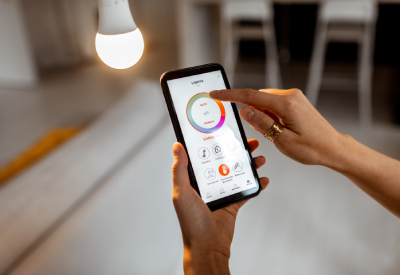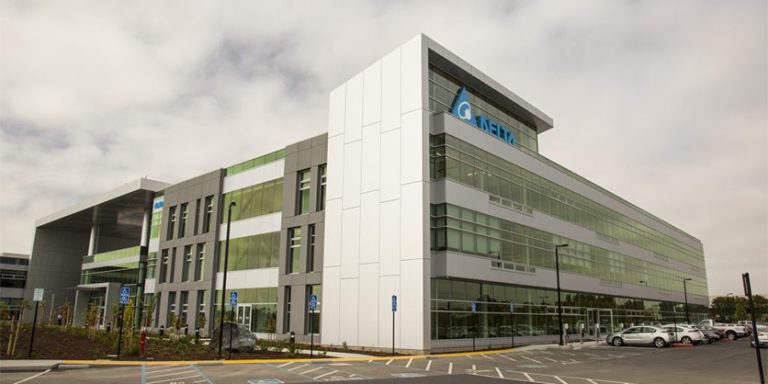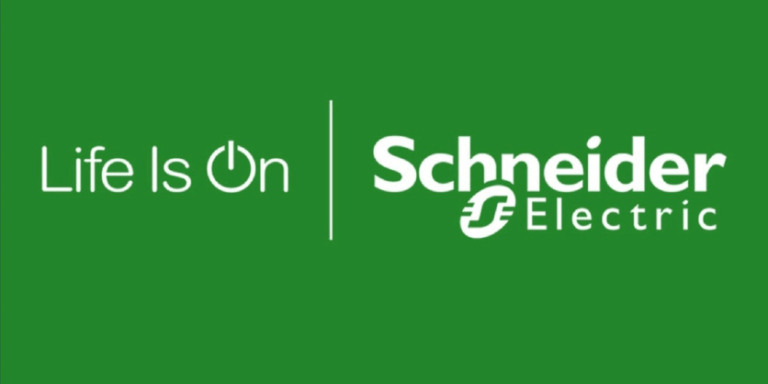Steve Mesh Talks Control for COVID Mitigation

September 7, 2021
Unless you’ve been living on a deserted South Pacific island prior to March 2020, you know that COVID has been the biggest issue facing mankind in the past year and a half. You also know that lots of people, governments and industries have developed methodologies and technology to mitigate the effects and spread of COVID.
Many companies in the lighting industry have scrambled to develop “disinfecting” luminaires – usually putting out energy in the UV-C area of the spectrum. IES (and other organizations) have run webinars on this subject. Some inventive companies have even created what are essentially UV-C “robots”. Similar to modern-day Roomba® vacuum cleaners, these robots are programmed to drive themselves into an enclosed room (e.g., a hotel guest room), determine the geometry of the space, decide where to park and then emit substantial doses of UV-C energy. If necessary, it may also move to a different location and emit more UV-C energy to make sure it covers every part of the room. Since the UV-C energy these “robotic luminaires” emit is very harmful to animals (including humans!), these types of devices typically come with integral sensors so they will shut off if someone accidentally comes into the room.
Some companies offer fixtures that emit UV-C energy which have to be manually wheeled into a space and positioned by the user (and/or repositioned depending on the size and complexity of a space).
Quite a few companies in the lighting industry have also developed “fixed” UV-C luminaires for permanent mounting in a space. These might be recessed, surface-mounted, pendant, wall-mounted, etc. – just like normal fixtures.
Regardless of whether you use “fixed” (permanently-installed) luminaires or some form of temporary fixtures, the effectiveness of UV-C as a COVID mitigation strategy is based on two main factors – 1) dosage, and 2) duration. So, if you’re thinking about using luminaires of any form that emit UV-C to mitigate COVID, you really have to do your homework.
All of that is pretty cool stuff. But this is a website devoted to lighting CONTROLS! So, are there COVID mitigation strategies that lighting controls can provide? Emphatically – YES. Let’s review some of these.
Occupancy analysis
If you have a reasonably granular deployment of occupancy sensors throughout the building, then you should have the raw data needed to evaluate overall levels of occupancy at any point in time. The more granular the deployment of occupancy sensors, the more accurate this evaluation can be. The best scenario is no doubt to have fixture-integrated sensors for the most accurate reading of occupancy levels. Obviously, if you have a variety of spaces, you should be able to see the occupancy levels in each space, not only in the entire building as a whole.
As you might imagine, Networked Lighting Control (NLC) systems may have software options to provide this kind of real-time reporting and interface with other systems. Many systems do in fact have ways of reporting occupancy vs. vacancy – and from that, you can easily derive the overall occupancy rates of individual spaces or an entire building. This is typically done using event-based reporting. This means that whenever an occupancy sensor changes state (i.e., from “occupied” to “vacant”, or vice versa), it reports that state change to the system (with time stamps). It’s not hard for a lighting control system to calculate the overall occupancy vs. vacancy rates using that data in any given period of time.
COVID mitigation, however, is a different matter. If there was a way for an NLC to provide this raw occupancy information in real time, then occupants and/or facility managers could be alerted when too many people might overwhelm the space’s ventilation capacity. Guess what? There is a way for an NLC to provide this information in real time. It can be sent through an application programming interface (API) to a company or software platform that provides 3rd party analytics used for space utilization or space optimization. If that company or software platform is designed for this, it can analyze the very same state information for all sensors, then send signals back to other systems or alarms on-site to make sure that someone knows when full capacity is being approached (or even exceeded). The beautiful part here is it’s the same sensor repurposing its data beyond just being energy code compliant to turn On and Off the general lighting.
Obviously, in order for this to happen, the NLC you use must have the ability to interface with other systems/software using APIs. Many do. Some do not. Then of course you must also have some sort of system or methodology to take that analysis and do something with it. So once that 3rd party sends the information back (in real time), some app or something else must be able to alert occupants and/or facility managers that there’s an impending excess of occupants based on the capacity of the ventilation system.
Incidentally, it may be that based on patterns of usage (occupancy) of different spaces, you can also identify which spaces need UV-C disinfection more urgently than others and perhaps couple it with a wipe-down cleaning program in spaces where UV-C deployment may not be possible. The sensor data provides accurate insights on the usage for your space..
Safety while using UV-C disinfecting luminaires
As mentioned, UV-C energy is very harmful to animals, including humans. If you use UV-C luminaires for disinfection – especially permanently mounted luminaires – then it might be possible to use the occupancy sensors already deployed as part of an NLC to turn UV-C luminaires off if someone comes into the room. This would be kind of like “reverse occupancy sensing” – because the system would turn lights OFF when sensing occupancy and turn lights ON when sensing vacancy.
This is a function that you should be able to set up using the native programming options of most NLCs. Just make sure to check the programming options very carefully to guarantee you can turn these luminaires OFF upon occupancy and ON upon vacancy – since that’s the reverse of what the systems would normally do. Additionally, carefully review how lighting responds to a disconnect of data (communication cable pull off a connector). Many NLC are design to “fail safe ON” to 100% in a data loss scenario.
Even if you use permanently installed occupancy sensors from an NLC, you may still be able to use the state information to control temporary or even robotic UV-C equipment. This may also require some sort of API to interface with those systems/equipment. Of course these robots or other manual systems would also have to be able to communicate with the NLC or other networked systems connected to the NLC.
Contact tracing
Many NLCs use beacons (e.g., Bluetooth beacons). These can help with many things. If you have a reasonably granular deployment of these (e.g., fixture-integrated), then you have a fairly dense mesh network in the space. That allows for triangulation which can allow you to navigate indoors – similar to how GPS works outdoors by triangulating the signal from three or more satellites.
Another thing that beacons (such as Bluetooth beacons) can help you do is to communicate with things like smartphones. Since most people walk around with their phones, a company or institution could potentially use apps to trace back where someone may have been if they end up getting COVID. This is like the notification apps that exist in various places, such as California. In California’s case, enabling this function on your iPhone has been voluntary. It is also anonymous. That could be the case within a company or institution as well. Obviously, there are a lot of concerns about privacy, etc.
At any rate, having a beacon function would at least potentially allow you to do contact tracing whether it’s deployed anonymously or not. Without it, you’d have to have some other equipment or methodology to do that. So it’s essentially an added value when deploying an NLC.
Asset tracking
Another benefit to using an NLC that has some form of beacons is that they can be used for asset tracking. If you try to shoplift in a store (and I’m not suggesting that you do!), usually an alarm goes off. That’s because they now put RFID tags in boxes and on clothing. RFID = radio frequency identification. The same thing can now be done using things like Bluetooth technology. These are really just different protocols, wavelengths, etc. Now that some NLCs use things like Bluetooth for communication between components, they can also be used for asset tracking.
What kinds of assets could you track that might be useful in the fight against COVID? Anything that’s not bolted down! Hospitals are starting to use these tags so they can immediately locate things like crash carts. Some airports have started to tag things like wheelchairs, since they obviously move around a lot. An incredible amount of wasted time can be spent by people in these kinds of spaces trying to locate vital equipment that’s needed in a timely manner.
Could these tags also be used for equipment that is bolted down? Why not? For example, automatic external defibrillators (AEDs) are often surface-mounted to the wall in boxes in many public spaces. Even if they remain in those positions, asset tags could still be used so they are on the same system as equipment that does actually move around (even including indoor “map” apps). In fact, if you use your imagination, you could probably come up with many more strategies for benefiting from new technology like asset tags. For example, AEDs have integral batteries that provide the charge to defibrillate the victim. Just like emergency lighting, the charge from those batteries would eventually drain to nothing if they weren’t recharged. Batteries in emergency lights or emergency ballasts/drivers usually are recharged – by a constant charging circuit. However, batteries in AEDs are not. So an external system might keep track of the number of months that a given AED goes without the battery being checked, recharged or replaced. As mentioned before, this would require some sort of interface (presumably via an API to a 3rd party program/platform) that could provide this type of management. Obviously, this is not a function that an NLC normally provides.
Who would have thought that NLCs could provide so much more value than just lighting energy savings alone? Fortunately, many people thought that! So now we have lots of possibilities for using NLCs to mitigate the effects of COVID. Of course you have to deploy the NLC in order to get these benefits. Room-based and/or unit equipment won’t provide this functionality. It’s just another reason to make the jump to light speed and dive into the world of tomorrow – by using NLCs with these amazing features and benefits.
Published with the permission of Lighting Controls Association
First published HERE









